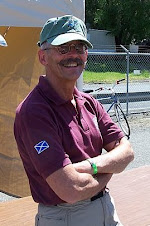
I am a resident of Lake Oswego and member of the Lake Oswego Planning Commission living in a divisive and antagonistic city. Recent political decisions have only amplified the discord and I see little willingness or ability of certain members of the City Council to rectify the situation. The December 13, 2010 Lake Oswego City Council hearing on sensitive lands fostered neither mutual trust nor friendly civil discourse. I witnessed a disregard of legitimate citizen concerns, disingenousness by city leadership, and our city treated as a private fiefdom. None of this bodes well for trust in government nor a unified citizenry. Fortunately January 4, 2011 will usher in a threefold increase in prudence, common sense, and fiscal awareness on the Lake Oswego City Council.
Our City Council produces a lot of talk and policies regarding sensitive lands, but their actions go counter to their expressed ideals. One of the conclusions from the Second Look Task Force is a city that leads by example with city owned open space and sensitive lands. That hasn't resonated with a majority of the council. The September 14, 2010 City Council special meeting is a case in point as it illustrated duplicity and hypocrisy at its finest. With 10.8% of the residents of Lake Oswego encumbered by the Sensitive Lands Ordinance our City Council interprets open space and sensitive lands on city owned property to encompass an indoor tennis facility on rural lands in the Stafford area. Is it prudent for the city to spend $4.8-$5.9 million to erect a tin shed on steroids masquerading as a indoor tennis facility on the Rassekh Property? Does it foster trust and respect for the city to disrupt sensitive lands and a riparian area to bring utilities to that tennis facility while its hands are gripping the private property owner's throat? This sort of self-serving decision making only fuels the schism I currently observe in our community. A city truly serious about sensitive lands would create wildlife habitat stepping stones on Stevens Meadows, Luscher Farm, Fir Lane, Rassekh and Brock Properties not a tennis facility, a potential driving range, or potential ball fields. Not to mention developing North Stafford which further stresses our infrastructure all the while prohibiting responsible stewardship on private property. Has the city even involved the Stafford Hamlet or the residents in Atherton Heights in any North Stafford scenario?
The Sensitive Lands Overlay is a series of individual private properties daisy chained together punitively treated in isolation. The city exempts itself while acquiescing to Metro's 'no net loss' of sensitive lands within the UGB by penalizing 206 acres of private land. Why is the largest feature of our city, the lake, left out of the equation? Any reasonable sensitive lands ordinance must exhibit common sense, a comprehensive watershed approach, across the board citizen support, and a buy-in from property owners. Sensitive lands must become a financial benefit to property owners no a financial burden. Right or wrong our city is perceived as long zealotry with a draconian ordinance and short on fairness. Quelling the "mob's" angst is accomplished by a well reasoned comprehensive citywide approach to sensitive lands not the apparent expedient applications of 'mitigation trading credits'.
(Photo taken during Audrey Mattison's creek restoration August 2010).





